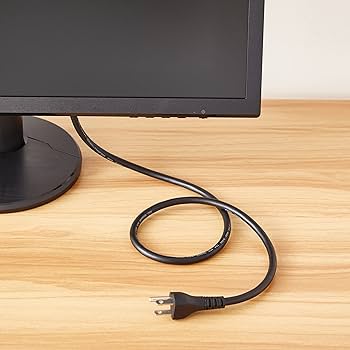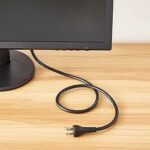You love extension cords and use them to supply power to your household projects and holiday lighting decorations, especially during the winter and fall. But this particular time, you are busy setting up cute holiday lights for outdoor party, and have extended indoor power to support the garden’s music systems and light up the space.
But you’re using usual extension cord, and every port in the cable was occupied. You even added the plugs supporting three devices to ensure the line fed every device with power. Suddenly, you hear some cracking sound and see sparks. Wait! Your extension cord had just had a voltage drop.
Other than that, the insulation on the wires of plastic extension cord had also melted. It can take too long to figure out why that happened, but in the end, it is clear that you hadn’t chosen the right extension cord for the right job.
The good news? You could avoid this in the future by selecting the perfect extension cord for every situation. Here is how.

1. Understand that Extension Cords Aren’t the Same
Extension cords aren’t the same at any given point. Two factors are responsible for this difference: the wire gauge or the wire’s diameter and the cord’s length.
Therefore, a heavy duty extension cord would have a different diameter than a light-duty extension cord. An extension cord gauge determines how much current the cable can carry. The diameter of an extension cord also influences how much heat a wire generates.
On the other hand, the cord’s length determines how much voltage is lost due to resistance in the wire. So, the longer your extension cord, the higher the voltage drop. Longer extension cords thus have a lower capacity than shorter extension cords of the same diameter.

2. Measuring the Gauge
Remember, the gauge of an extension is measured in the American Wire Gauge number. You can, therefore, use this particular number to know your extension cord’s power.
The smaller your cord’s AWG number, the thicker the cord’s wire. For instance, if you have 120-volt outlets, a 120-volt cord with 12 AWG would be the perfect extension cord. Failure to consider this is what causes accidents. It happens if the extension cord’s wire is thicker, while the length is also longer.
This imbalance in power flow made by wire allows too much current to flow through it, causing the extension cords plastic insulation to melt and cause a fire.
To avoid messing, here are some of the things you should consider:
Light Duty Extension Cords
See your ordinary lamp cord; that is what a light-duty extension cord looks like. You should only go for such an extension cord when using small devices.
Think of an alarm clock or a tiny LED light fixture. While at this, avoid plugging a grounded extension cord into an ungrounded line. The reason is that electric appliances that generate heat, including clothes irons and space heaters, use heavy electrical loads.
You should only use these devices with heavy-duty extension cords. So, for up to your 25-foot extension cord, go for an 18 AWG wire. For up to 50 feet, a 16 AWG wire is the best option. And for up to 100 feet, choose a 14 AWG wire.

Average-Duty Extension Cords
Medium-duty extension cords are different from light-duty extension cords. The average duty extension cords have a larger gauge and come with a three-prong plug that’s often grounded.
Choose this extension cord for your televisions, computers, and any other electronic that draws up at least 10 amperes. In this case, for up to 100 feet, choose a 12 AWG wire. Choose a 14 AWG wire for 50 feet and a 16 AWG wire for up to 25 feet.
Heavy-Duty Extension Cords
Appliances like heaters and power tools draw up to 15 amperes of power. These appliances are the reason heavy-duty extension cords exist. Use a 12 AWG wire for your 50 feet, 14 AWG for up to 25 feet, and up to 100 feet, use a 10 AWG wire.
Remember to choose models with inbuilt GFCI protection if you’ll be using your extension cord in damp environments or outside.
If your extension cord doesn’t have an inward GFCI protection feature, plug the cable into an outlet fitted with a GFCI protection. Such protection will help you avoid electric shocks should your wires come in contact with water.

Of importance also is the knowledge that extension cords are meant to be used temporarily. So, if you find yourself using extension cords for your permanent electrical connections at home, it is safer for you to get an installation of new outlets.
New outlets will consider the power current and voltage and can help you avoid overheating and voltage drops.
Conclusion
Many people need to remember that while an extension is designed to help them become more organized, they often misuse these extension cords. More than extending the reach of your power tools and electric devices is required.
The diameter of the extension cord and its length determine whether you’re using the cable for the proper purpose. Consider the above measurements as they are uniform, and as long as you adhere to them, you can forget about electric shocks. Any slight ignorance could cost you big time.


